Trending Now - Meet The Multicoloured Giant Squirrels Of India That Grow Up To 3 ft Long
What first comes to mind when you hear the word ‘rodent?’ Sure, they have acquired a certain reputation as pests, invaders with insatiable appetites who spread disease and misery. But they can also be loyal and cute household pets, as many a rat, mouse or guinea pig owner can confirm.
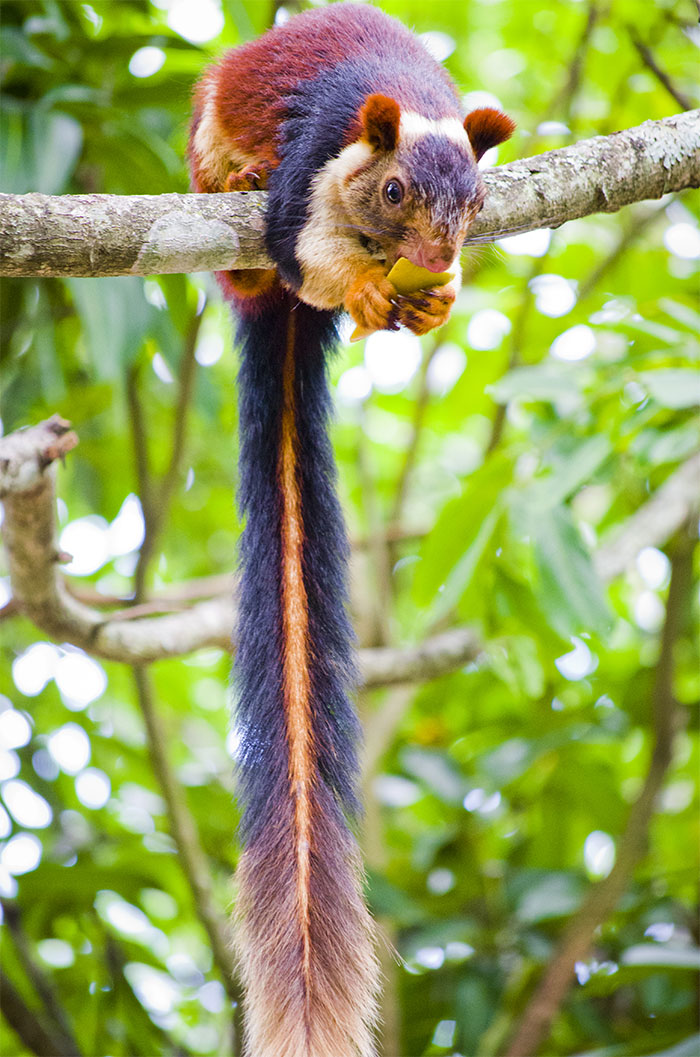
Image credits: VinodBhattu
So cute, yes. But magnificent? Beautiful? Probably not. Well, maybe these stylish squirrels will go some way toward changing that! The Malabar giant squirrel, also known as Shekru, is native to India and comes quite resplendent in an incredibly dapper multi-colored coat.
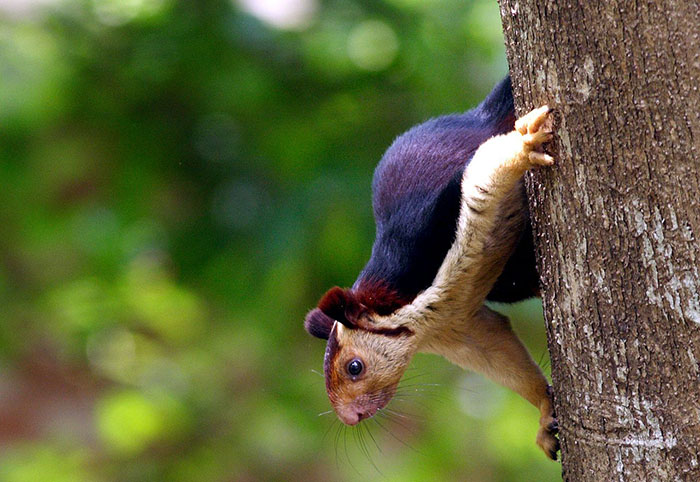
Image credits: N. A. Naseer
For those more used to seeing the American grey squirrel or its far cuter cousin the Europen red, the Malabar is bound to come as a shock. For starters, as the name suggests, they are huge. Stretching as long as 3 feet, they are much harder to miss than our own scurrilous buddies. Admittedly though, the brilliantly blue bushy tail accounts for much of the Malabar’s length.
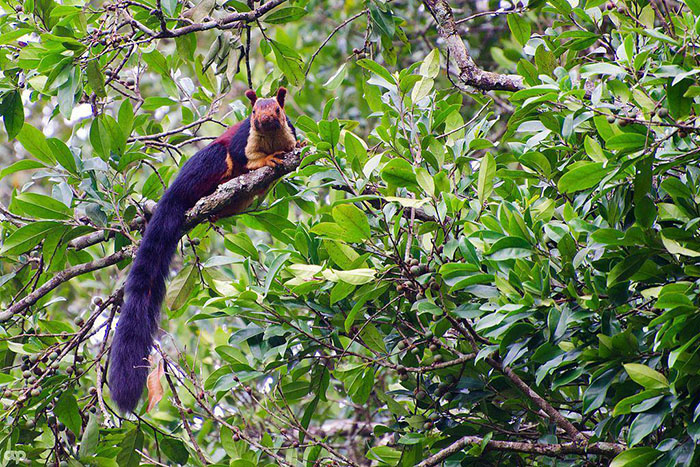
Image credits: Arshad.ka5
However, they may be more difficult to find than their large size and bright coat suggest. The shades of black, brown and orange, as well as maroon and purple, can assist them in blending perfectly with the forest canopy, where they spend their time leaping from tree to tree. This is especially useful for escaping the attention of predators, such as various birds of prey and also leopards.
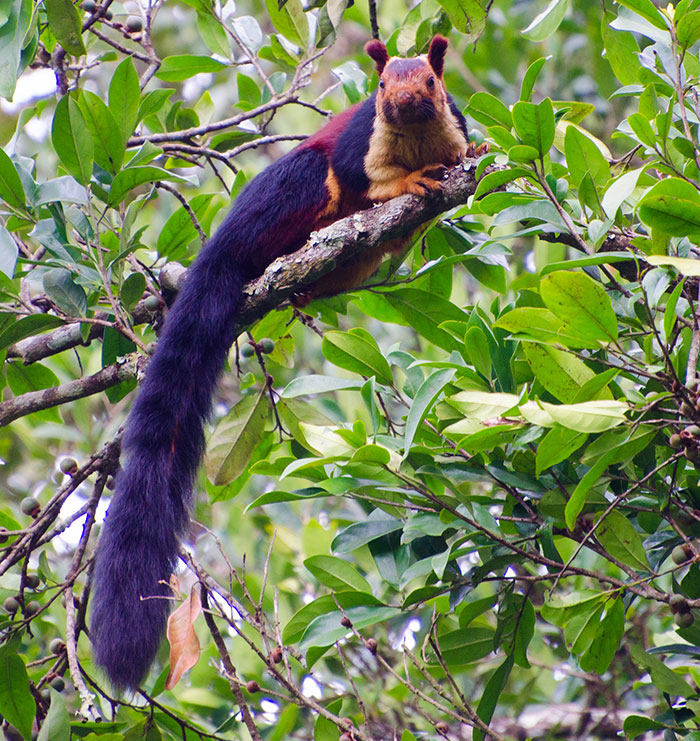
Image credits: Arshad.ka5
The Malabar isn’t too fussy about its diet and will eat what’s available up there in the treetops. Using their huge, bushy tails to swing around, they’ll search for flowers, bark, seeds, insects, and even bird eggs if there are any freely available. Just watch out for mother eagle though!
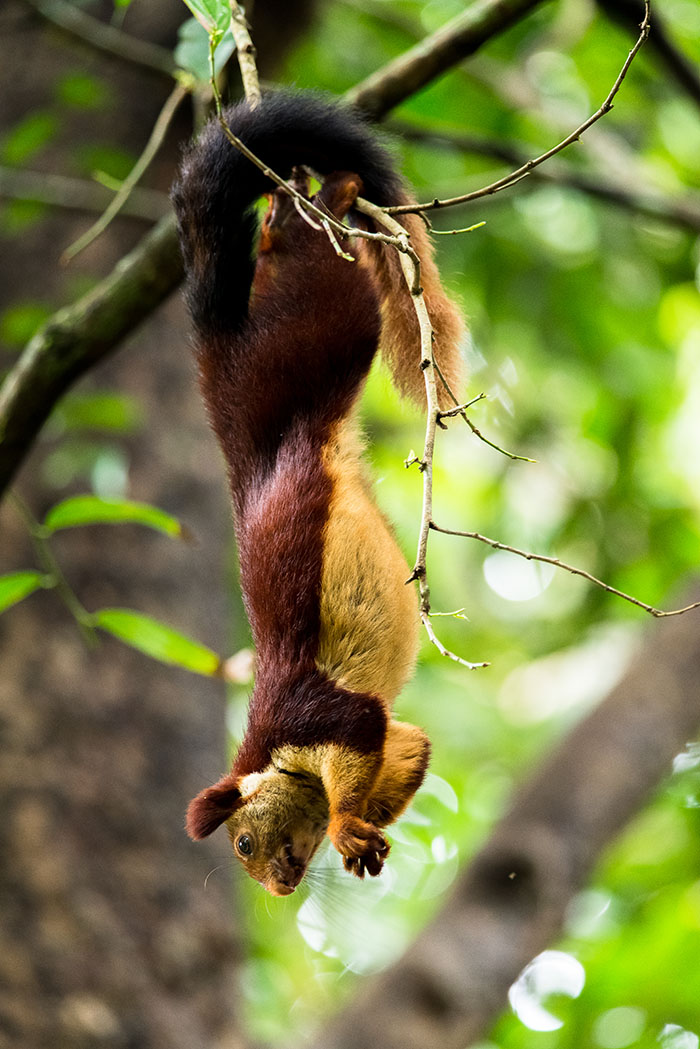
Image credits: Manojiritty
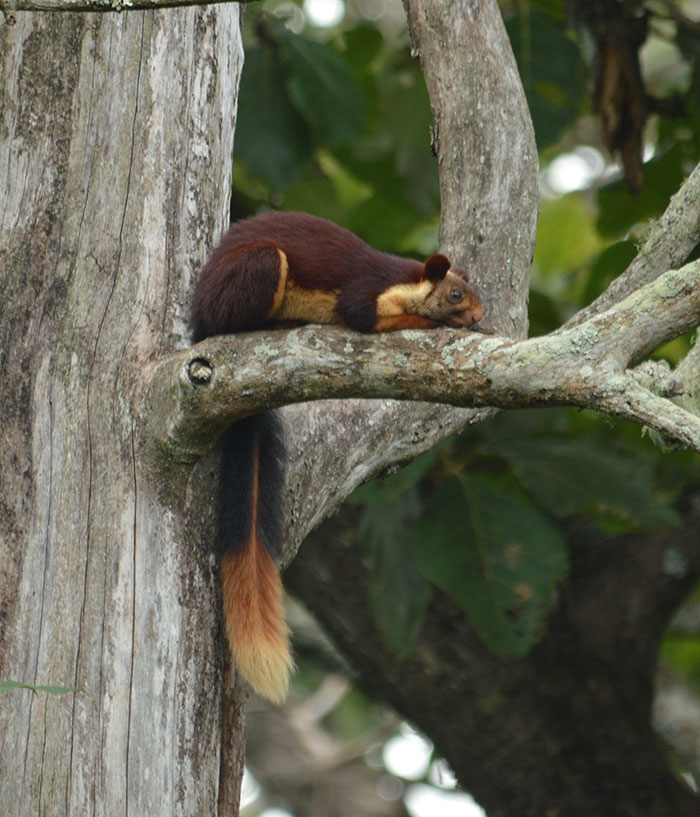
Image credits: 27Abhay
While not a lot is known about the population of the Malabar giant squirrel, their numbers are considered to be declining. At the moment they are not listed as endangered, but they sadly face real threats; they are hunted in some parts of India for their beautiful fur, and their habitat is getting gradually jeopardized by human encroachment. In some areas, they have already disappeared completely.
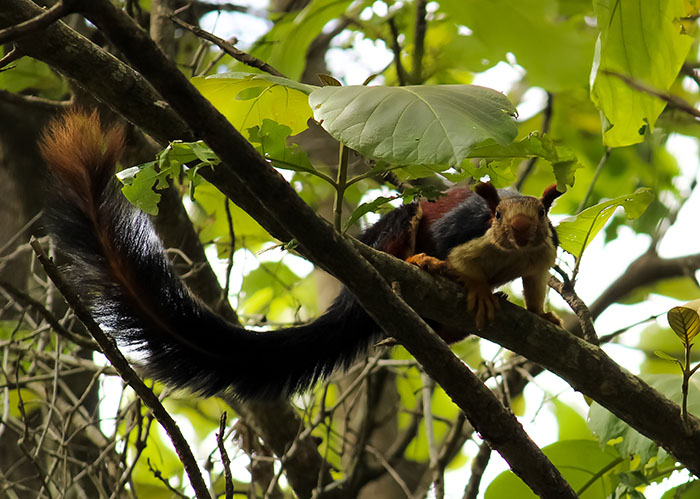
Image credits: Gowthaman k.a
Bored Panda spoke to amateur photographer Mohammed Farooq, from the beautiful forest town of Kodaikanal in Tamil Nadu, South India. He had a great surprise this morning, after coming across a Malabar giant squirrel on his daily walk.

Image credits: Yathin S Krishnappa
“I came to Kodaikanal in 1982 as a young boy when this town was much less populated by humans and it was green all over,” he told us. “I used to see these squirrels all over town, flying from tree to tree, but slowly their population has dwindled to extinction. But today, after nearly 34 years, I encountered one! It was a great surprise for me.”
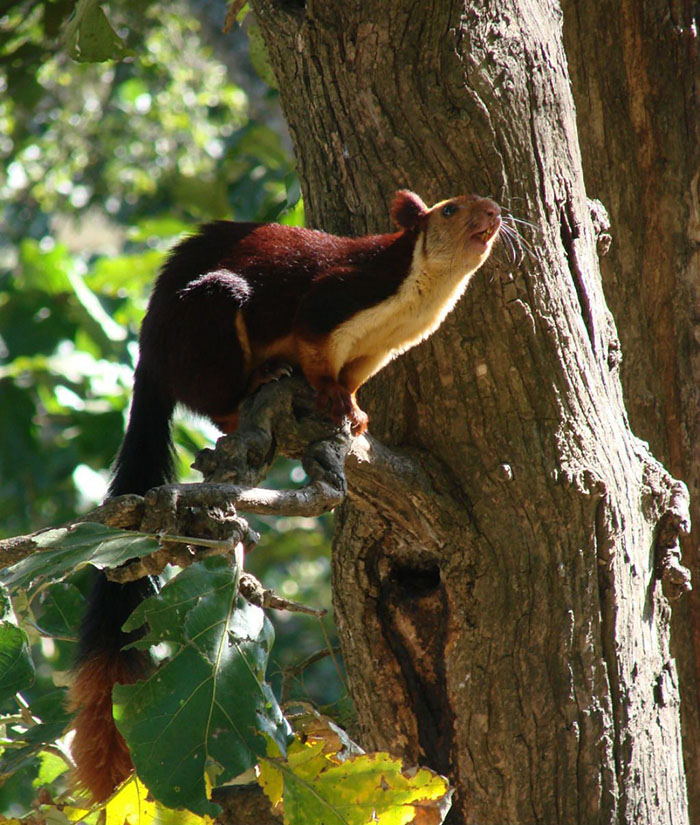
Image credits: Rakesh Kumar Dogra
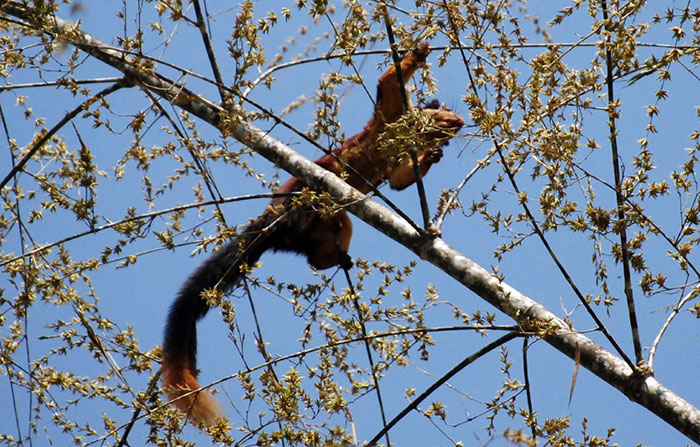
Image credits: Dhruvaraj S
Mohammed believes that a sudden explosion of people moving into the popular tourist town in the 1990s was what hastened the decline of the Malabar giant squirrel in the area. But now they appear to be making a comeback, perhaps having adapted to living alongside humans.
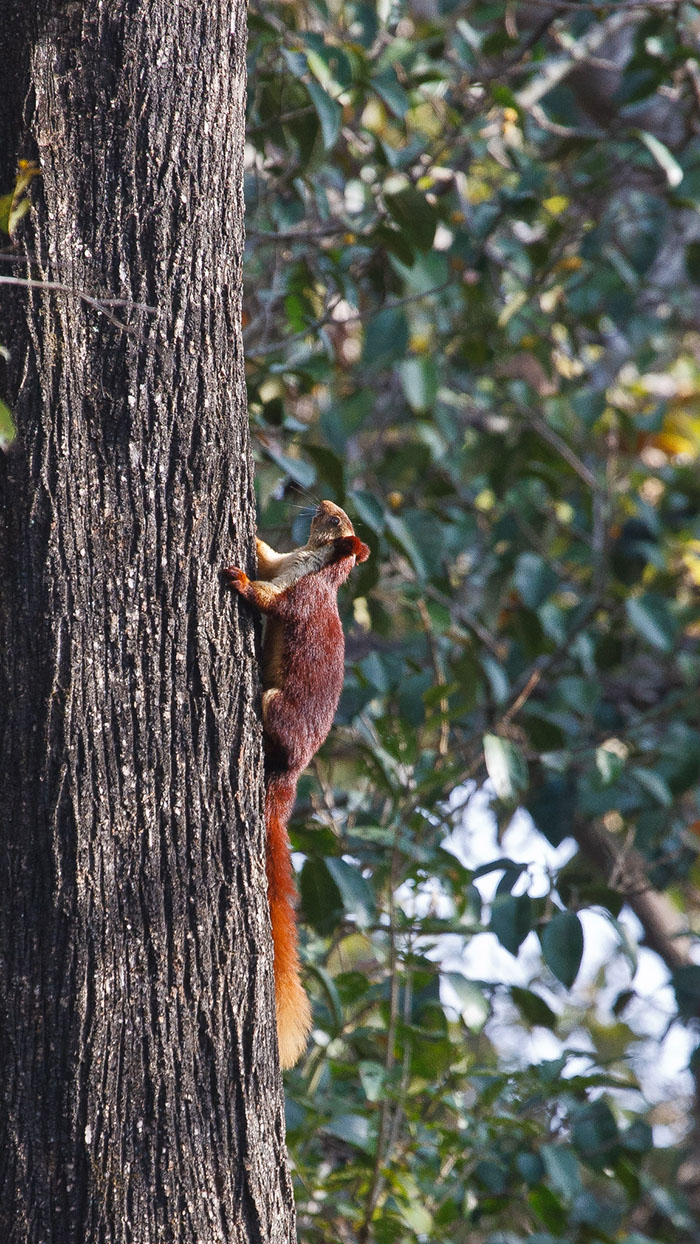
Image credits: Mike Prince
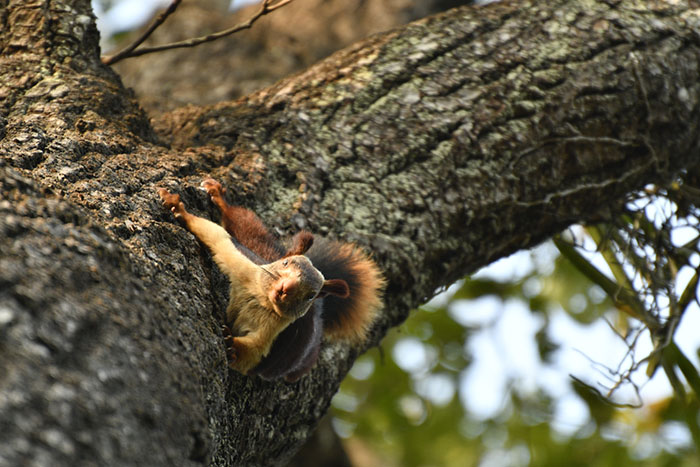
Image credits: Shagil Kannur
“They are are not hunted here I believe,” Mohammed explained. “Lots of people in this area have learned to respect nature. I think there is a revival of the squirrel population here. They are coming back.”
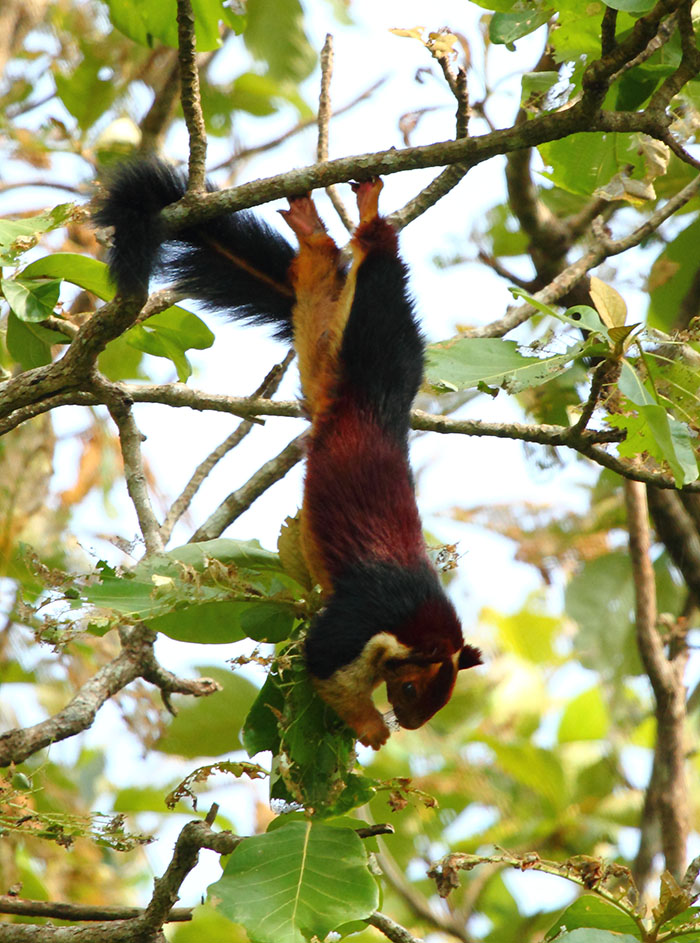
Image credits: Joseph Lazer
Further helping the comeback of these cute critters is the Rajiv Gandhi Zoological Park in Pune, where they are being bred in captivity and studied. “We wanted to study them genetically,” zoo director Rajkumar Jadhav told The Hindu. “There are plenty of studies on the tiger, but so little is known about smaller animals like this one.” They are also studying Malabar behavior to understand how many times the animals mate, their gestation period and their lifespan.
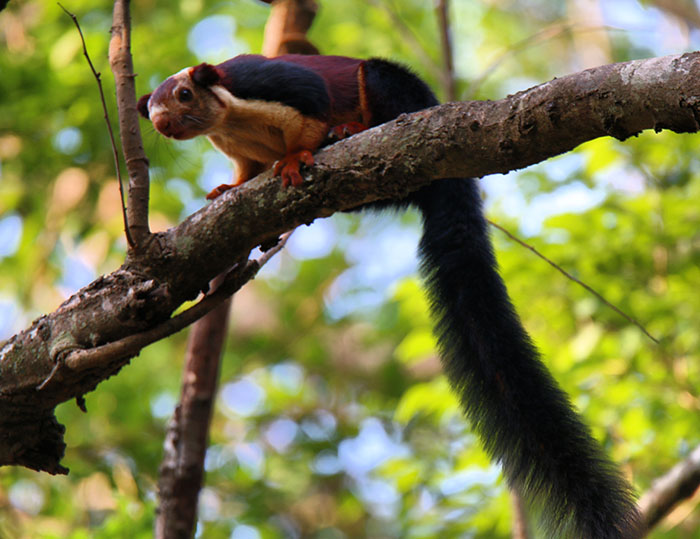
Image credits: Ashutoshdudhatra
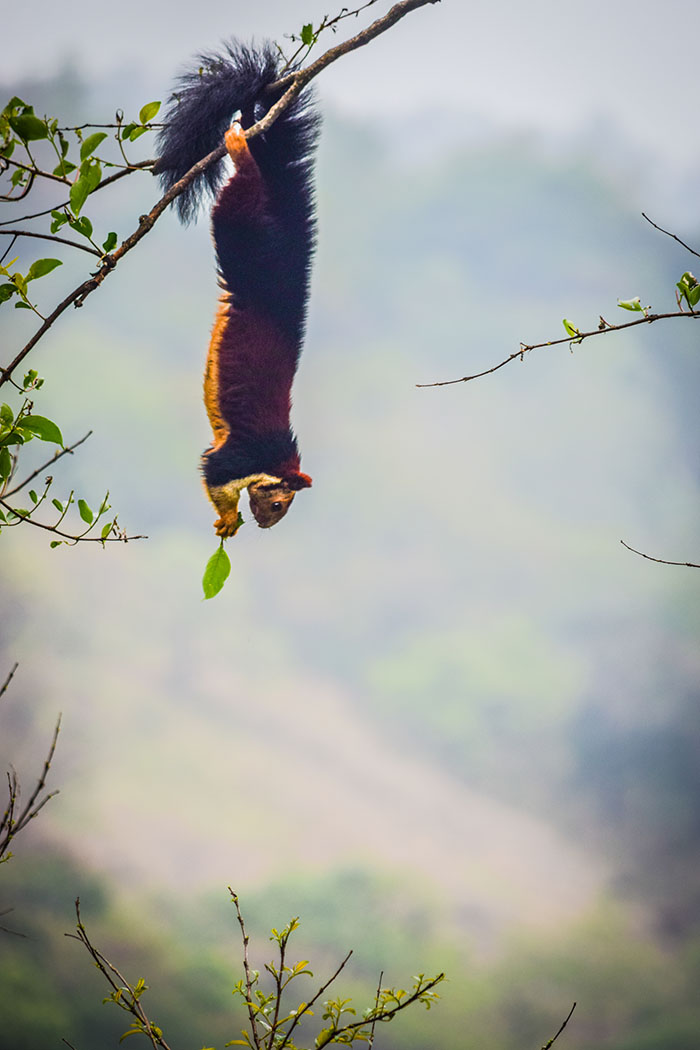
Image credits: Manoj Ashokkumar
There is also some good news from the wild; the giant squirrel’s population is steadily increasing in the Bhimashankar Wildlife Sanctuary, an area specifically designed for the protection of the Malabar giant squirrel. A census found that their numbers had climbed 8% in the sanctuary between 2015 and 2016.
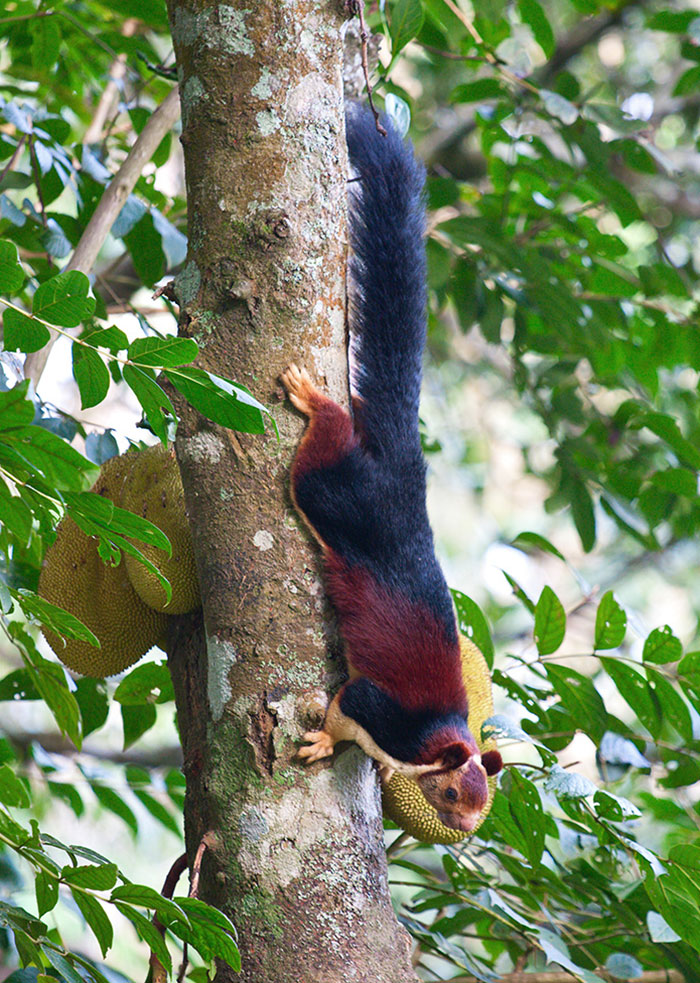
Image credits: Raghu Peethambaran
So it looks like this beautiful and much-loved animal is now getting the respect and protection it deserves in India, and will hopefully be one day as abundant as it once was. Would you like to see one in the wild? Let us know in the comments below!

Image credits: Mohammed Farooq
Here’s what people had to say about the sweet squirrels





































